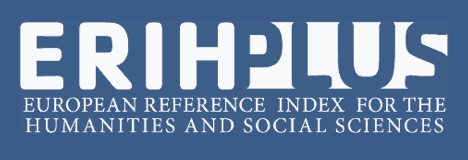Use of data platforms and Google Earth Engine in criosphere education and climate change
Abstract
The proposal of this research is to present lesson plans, using ICT, to assist teachers in teaching climate change and Cryosphere in the Geography course. The lesson plans were constructed with objective items, class description, activity and target audience. Two classes (1 and 2) were proposed where concepts of the Cryosphere will be discussed and how their dynamics will be altered by the anthropic factor. Students will be encouraged to reflect on the effects of climate change on their city, and how strategies can be adopted to minimize these impacts (Lessons 4 and 5). Addressing the social context, a class (a 3) proposes to discuss how low-income communities will be affected. The lesson plans were organized according to a teaching-learning logic that encourages students to have a systemic view of the effects and impacts of climate change.
References
CASTRO, P.A.P.P.; TUCUNDUVA, C.C.; ARNS, E.M. A importância do planejamento das aulas para organização do trabalho do professor em sua prática docente. ATHENA, v. 10, n. 10, 2008.
CAVALCANTI, L. de S. Geografia, escola e construção de conhecimentos. 14. ed. São Paulo: Papirus, 2010. 192 p.
CHRISTOPHERSON, R. W. Geossistemas: uma introdução à Geografia Física. Porto Alegre: Bookman, 7ed., 2012.
FIGUEIREDO, A. R. de. A sociocriosfera nos Andes Centrais: percepções, adaptações e impactos dos desastres glaciais no Callejón de Huaylas, Peru. 2017. 128 p. Dissertação de Mestrado em Geografia, Universidade Federal do Rio Grande do Sul, Porto Alegre, 2017.
GOOGLE. Google Earth Education. Disponível em https://www.google.com/earth/ education/. Acesso em 20 jul. 2019.
MOURA. L. M. C.; FILIZOLA. R. Uso de linguagem cartográfica no ensino de Geografia: os mapas e atlas digitais na sala de aula. Disponível em: http://www.diaadiaeducacao.pr.gov.br/portals/pde/arquivos/1017-4.pdf. Acesso em 11 jan. 2019.
OLIVEIRA, M.C. Plano de aula: ferramenta pedagógica da prática docente. Pergaminho. Patos de Minas: UNIPAM, (2), 2011, 129 p.
NASA. National Aeronautics and Space Administration. Disponível em https://climate.nasa.gov/images-of-change. Acesso em 10 de janeiro de 2019.
NASA. National Aeronautics and Space Administration. Disponível em vesl.jpl.nasa.gov/sea-level/slr-eustatic. Acesso em 10 de janeiro de 2019.
NASA. National Aeronautics and Space Administration. Disponível em https://climate.nasa.gov/interactives/climate-time-machine. Acesso em 10 de janeiro de 2019.
PASSINI, E. Y. Alfabetização cartográfica e a aprendizagem de Geografia. 1.ed. São Paulo: Cortez, 2012.
SANTOS. A. Planejamento de ensino: suas contribuições no processo de ensino e aprendizagem na Escola Municipal Papa Pio XII. 2013. 43 p. Monografia de Especialização em Educação: Métodos e Técnicas de Ensino. Universidade Tecnológica Federal do Paraná, 2013.
SANTOS, V.M.N. Uso escolar do Sensoriamento Remoto como recurso didático pedagógico no estudo do meio ambiente. São José dos Campos: Instituto Nacional de Pesquisas Espaciais- INPE, 2002. 15p.
SANTOS, M.F.P.; CALLAI, H.C. Tecnologia de Informação no Ensino de Geografia. In: Encontro Nacional de Prática de Ensino em Geografia, Porto Alegre. Acesso em 10 jan. 2019.
SANTOS, L. E. F. dos; SOUZA JÚNIOR, E.; SIMÕES, J. C.; FILIPPI, E. E. O Brasil e o Ártico. Finisterra - Revista Portuguesa de Geografia, n. 107, 125-139, 2018.
SILVEIRA, P. da C.; PETSCH, C.; SIMÕES, J. C. Entre os altos e baixos do livro didático: a Antártica não é plana. Revista Geonorte, Edição Especial 4, v.10, n.1, p.74-79, 2014.
SIMÕES, J. C. Glossário da língua portuguesa da neve, do gelo e termos correlatos. Pesquisa Antártica Brasileira, 4, p. 119-154, 2004
TOMAZ, A.; SARTOR, S. de B. Atividades para Trabalhar Didaticamente Conteúdos de Geografia na 6ª Série do Ensino Fundamental.Associação dos Geográficos Brasileiros, Porto Alegre, v. 31, n. 25, p. 01-10, 2010.
THORSTEN, S.; PHILIPP, M.; CHRISTIAN, S.; LIPPL, S.; COCHACHIN, A.; BRAUN, M. H. Changes of the tropical glaciers throughout Peru between 2000 and 2016 – Mass balance and area fluctuations. The Cryosphere Discuss, 34 p. 2019.

This work is licensed under a Creative Commons Attribution-NonCommercial 4.0 International License.
Policy Proposal for Free Access Journals
Authors who publish in this journal agree to the following terms:
a. Authors retain the copyright and grant the journal the right of first publication, with the work simultaneously licensed under the Creative Commons Attribution License which allows the sharing of the work with acknowledgment of the authorship of the work and initial publication in this journal.
b. Authors are authorized to take additional contracts separately, for non-exclusive distribution of the version of the work published in this journal (eg publish in institutional repository or as a book chapter), with acknowledgment of authorship and initial publication in this journal.
c. Authors are allowed and encouraged to publish and distribute their work online (eg in institutional repositories or on their personal page) at any point before or during the editorial process, as this can generate productive changes, as well as increase the impact and The citation of published work (See The Effect of Free Access).





















